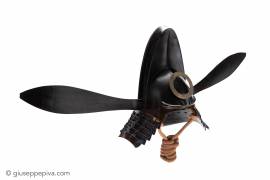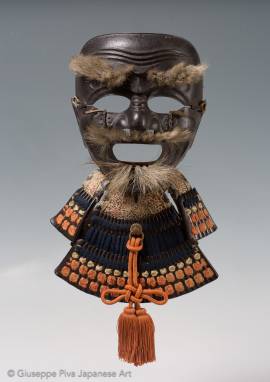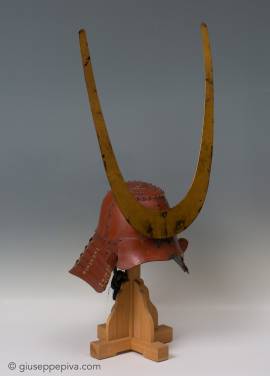Samurai helmet in the shape of a court capMomoyama to early Edo Period17th century The wearing of helmets that reproduced the shapes of traditional headgear became common among members of the military class by the end of the 16th century, in part due to new battle tactics that prioritised fire-weapons and removed generals from the battlefield, in part for the new taste of the warrior class, which tended to emphasise the individuality of the commanders. Helmets shaped as a tōkanmuri, a ceremonial lacquer hat worn at the Chinese court by high-ranking literati and statesmen, were...
WORKS FOR SALE
Okina SōmenA full face russet iron samurai amour’s mask formed and decorated to resemble the face of an old manEdo period, 18th centuryArmor for the face - mengu - developed towards the end of the Muromachi Period (1336- 1573) with the double role of protection and a fastening point for the kabuto ropes through hooks or rings. However, masks that completely cover the face were never common, as not very practical, and their spread was restricted to high-ranking samurai who could wear them for official occasions as an indication of their social status. For this reason original sōmen are...
Red lacquered Saika samurai helmetHaruta school, Momoyama period (1573-1615) The Haruta armourers who moved to Kii province in the early 17th century took the name from the village where they worked, Saika, near Wakayama, possibly on request of the local daimyo, Asano Yukinaga, a great armour amateur. Specialized in the construction of plate helmets, they produced few typologies of kabuto. Among them, the most “classical” is made of six large plates with another large one on top shaped as a chrysanthemum; all the plates are joint with rives decorated with washers (za-...
Copyright © 2016 - giuseppe piva - VAT: 05104180962










